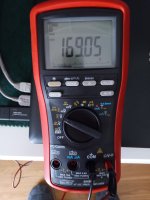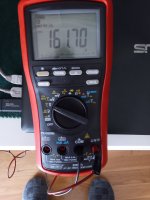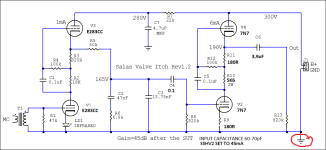That one held better than the one in the other channel. Throw the bad one away not to get mixed with good ones.Now I'm more confident using again FT-1 seeing the other cap is good.
Now I'm enjoying your work Salas, but I will measure tomorrow for sure.
REC button on your Brymen DMM is MIN/MAX function. If already hooked up to measure voltage and REC is activated, when you power on it captures instant MAX voltage.
It shows that the drifted FT-1 unit wasn't grilled by turn on peaks because of its 200V spec.
...Also measured correctly biased. 165V point noted on the schematic, 162V in your build. Within 2%. Very close when considering there are differences in tubes bias details between samples or alternative types.
In any case, better using 250V or higher for C3 & C4 when possible. Especially so for C6. For peace of mind.
I can't get reasonable priced 250V teflon caps for RIAA but at least my peace of mind is guaranted using C6 3.9uF Mundorf Silver Gold Oil rated 1000V.....In any case, better using 250V or higher for C3 & C4 when possible. Especially so for C6. For peace of mind.
Last edited:
After some months check again if the C3 values remain correct since there's been a negative capacitance drift incident with an FT-1 in one channel. Maybe it was simply random, maybe there is a tendency.
With 7N7 in the output stage and those modified resistor values around it, Ip should be closer to 9mA and C6 voltage bias 170-175V.Yes, I used 200V rated RIAA caps because I see in your schematic 165VDC
10000 hours anti vibration low noise tubes. Alike the 6N2P-ER.If I remember well are Siemens gold pins bought to Erno Borbely.....
- Home
- Source & Line
- Analogue Source
- Valve Itch phono


